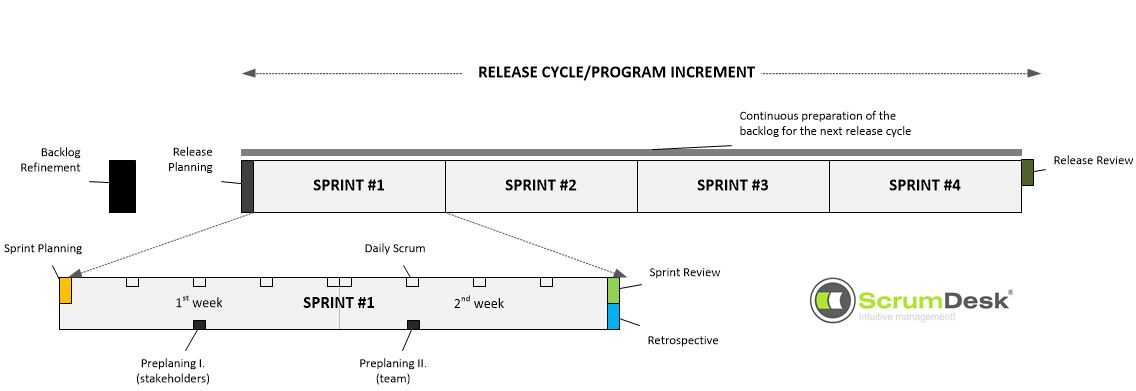Scrum. What is it?
Scrum is a lightweight and simple project management framework used for agile development of products that need to be delivered regularly, often, and according to business value and needs.

Scrum ceremonies and artifacts
All requirements are tracked in an ordered list which is called a product backlog. From that list, requirements are pulled by the team into an iteration backlog called sprint backlog. The iteration, sprint, is typically 10 days long iteration resulting in a working increment of the product developed by the team.
Requirements are processed during the product backlog grooming (refinement) sessions led by the product owner who owns the backlog. This is done a couple of times a year to give the development team an idea about the strategy and product vision. The goal is to agree on features and split them into smaller requirements called epics. Also, a roadmap can be established in such a session by slotting the epics into multiple versions, releases.
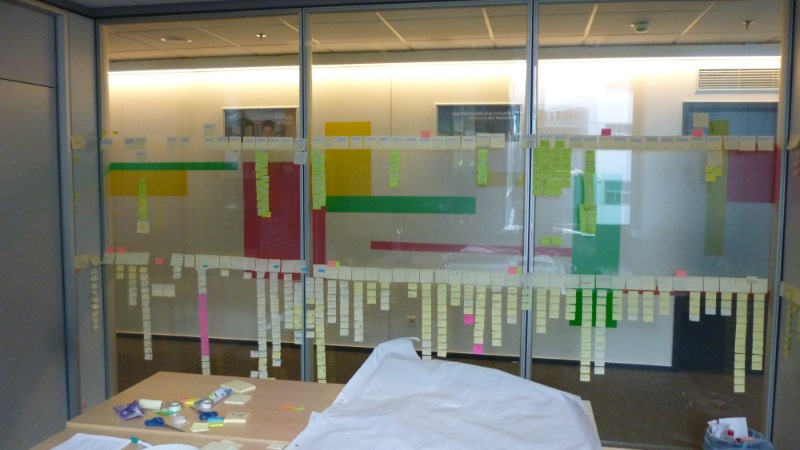
The product owner plans requirements into multiple releases. The release is typically 3-6 sprints. During the release planning session, the release backlog is split into multiple releases, agreed with the team, prioritized and estimated (in story points).
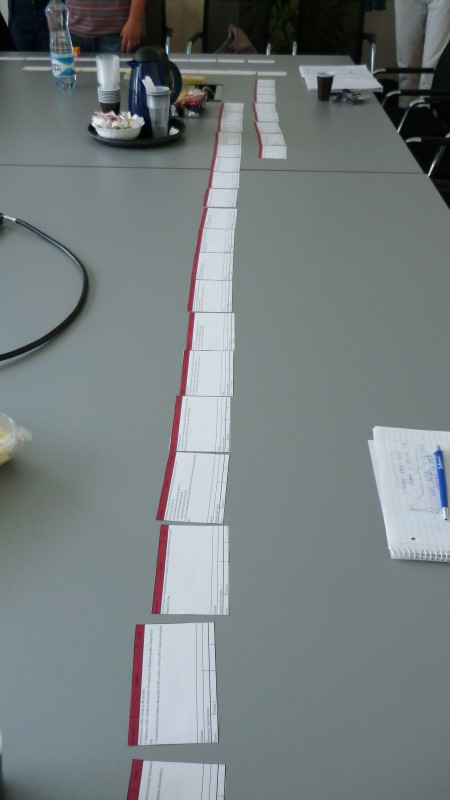
During the sprint planning session, requirements are broken into multiple tasks. These tasks are pinned on the Kanban board then and updated according to the status and progress of work.
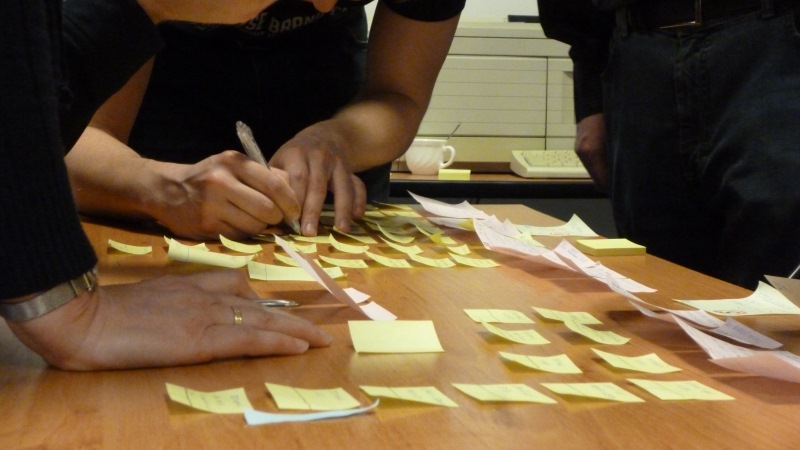
The row contains business requirements broken into multiple tasks (small colored cards on the picture below). The board is split into multiple columns based on workflow. Typically it consists of three columns: To Do, Work in progress, Done.
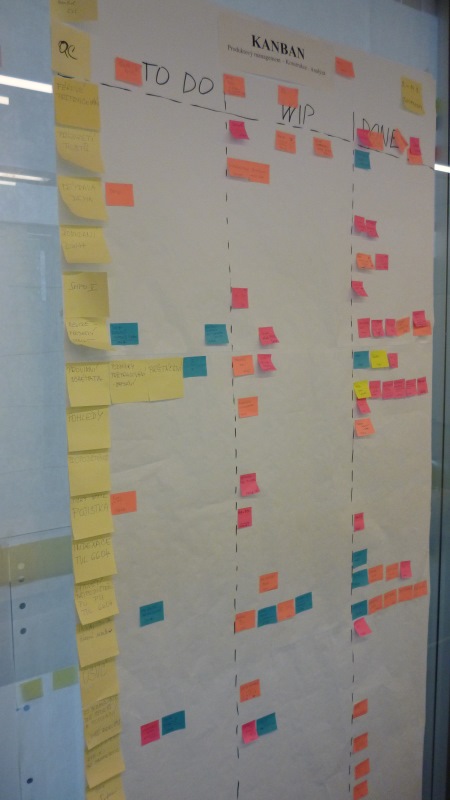
The team meets daily in front of the kanban board to synchronize work progress on daily standups.
The sprint ends with a sprint review where the team, product owner, and stakeholders will review the status of implementation and typically do some demonstration. After that, the last ceremony is done. The retrospective is a short session for the team in which the team discusses further process and organization continuous improvements.
Scrum Roles

There are only three roles in Scrum.
The Product Owner is responsible for product backlog management, communication with the clients, prioritization, and acceptance of developed features.
Scrum Master is responsible for support of the agile team, facilitation, organization of work, and continuous improvements. It is the servant leader of the team helping them to work efficiently and effectively.
The Agile Team is focused on the delivery of fully functional features developed with technical excellence and an understanding of business and client needs.

